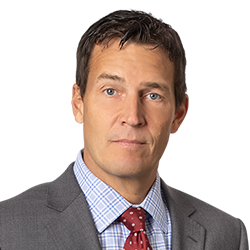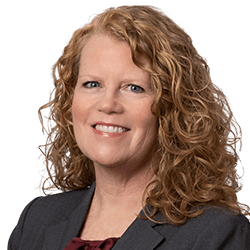Court Holds COVID-19 Government Closures Do Not Trigger Business Interruption Coverage
A recent ruling from the U.S. District Court for the Eastern District of Michigan has provided more guidance in predicting how COVID-19 related losses and litigation will be handled.
In Turek Enterprises, Inc., d/b/a Alcona Chiropractic v. State Farm Mut. Auto. Ins. Co., et al, the Court ruled that State Farm Mutual Automobile Insurance Co. did not have to cover a chiropractic office’s losses alleged from government-ordered closures due to COVID-19. The Court held that the insured failed to allege physical loss and that the virus exclusion bars coverage.
This class action lawsuit seeking business interruption coverage was denied because the entire case focused on the definition of “direct physical loss;” however, did not demonstrate any “tangible damage to covered property” that was required as a condition precedent to coverage.
The chiropractor sued State Farm in June alleging the insurer wrongfully applied a virus exclusion to deny coverage. The insured argued the virus exclusion did not relate to the claimed losses, which were solely caused by government-closure orders. To support its position, the insured also argued COVID-19 was not present on its property, negating the “virus” related exclusion.
In Judge Ludington’s Order, the Court noted that even if the chiropractor alleged that the government-mandated closures were the cause of loss, “closure orders” were in response to curbing the spread of COVID-19 and the virus that causes it. Accordingly, the chiropractor’s business losses were barred by the policy’s virus exclusion. The chiropractor’s position disregarded “the anti-concurrent causation clause, which extend[ed] the virus exclusion to all losses where a virus is part of the causal chain.”
Plaintiff argued the exclusion applied only to decontamination costs and State Farm misrepresented that provision of the policy. In reviewing the applicable policy, Judge Ludington found that “[b]y its terms, the policy does not limit the virus exclusion to contamination, and plaintiff has failed to show that the virus exclusion is ambiguous.” Furthermore, “[e]ven if defendants misrepresented the purpose and extent of the virus exclusion in 2006, the plain, unambiguous meaning of the virus exclusion today negates coverage.”
In another creative argument, Plaintiff argued it had experienced “tangible” damage because the business was suspended by government closure orders; therefore, the business necessarily incurred ongoing “passive depreciation,” instead of a direct physical loss. The “passive depreciation” damage argued that all business equipment was continuing to lose value based on age and non-use. The Court rebuffed this argument by reasoning “[t]he plain meaning of direct physical loss to covered property requires that there be a loss to covered property, and not just any loss.”
Ultimately, counsel and the plaintiff’s bar are both becoming more creative looking for special policy terms which ambiguity could open the door to such an argument as pleaded in this matter. Carriers should be addressing each claim and litigated coverage file on the individual claim’s separate and distinct terms, facts and application. No two COVID-19 claims are the same, and each coverage issue must be individually reviewed in order to fairly and accurately determine coverage and its application.related services
About Insurance Law Blog
Baker Sterchi's Insurance Blog examines topics and developments of interest to insurance carriers, with a particular focus on Missouri, Illinois and Kansas law. Learn more about our blog editors, Richard Woolf and Philip Sumner, and our Insurance practice.
Subscribe via email
Subscribe to rss feeds
RSS FeedsABOUT baker sterchi blogs
Baker Sterchi Cowden & Rice LLC (Baker Sterchi) publishes this website as a service to our clients, colleagues and others, for informational purposes only. These materials are not intended to create an attorney-client relationship, and are not a substitute for sound legal advice. You should not base any action or lack of action on any information included in our website, without first seeking appropriate legal or other professional advice. If you contact us through our website or via email, no attorney-client relationship is created, and no confidential information should be transmitted. Communication with Baker Sterchi by e-mail or other transmissions over the Internet may not be secure, and you should not send confidential electronic messages that are not adequately encrypted.
The hiring of an attorney is an important decision, which should not be based solely on information appearing on our website. To the extent our website has provided links to other Internet resources, those links are not under our control, and we are not responsible for their content. We do our best to provide you current, accurate information; however, we cannot guarantee that this information is the most current, correct or complete. In addition, you should not take this information as a promise or indication of future results.
Disclaimer
The Insurance Law Blog is made available by Baker Sterchi Cowden & Rice LLC for educational purposes only as well as to give you general information and a general understanding of the law, not to provide specific legal advice. Your use of this blog site alone creates no attorney client relationship between you and the firm.
Confidential information
Do not include confidential information in comments or other feedback or messages related to the Insurance Law Blog, as these are neither confidential nor secure methods of communicating with attorneys. The Insurance Law Blog should not be used as a substitute for competent legal advice from a licensed professional attorney in your state.













